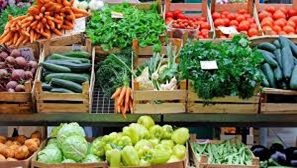Prime Minister Abiy has recently announced that Ethiopia has resolved to construct a massive fertilizer factory in cooperation with the Dangote Group, a Nigerian company engaged in multiple sets of investments across Africa. The company has already invested on a cement factory in Oromia and one more Sheger City with another interest to build a sugar factory..
The program is part of Ethiopia’s national reform program in the economic sector putting more emphasis on the development of the agricultural sector which has always proved to be the backbone of the national economy of the country and major source of employment.
At the global market, fertilizer was valued at around $311 billion in 2024 (635 million tons consumed) Forecasts indicate $403 billion in 2025 growing at a 6.1 % CAGR to $541 billion by 2030 .~$230 billion in 2025, rising at ~4.1 % CAGR to $281 billion by 2030 .
At the regional level, Asia-Pacific dominates, accounting for ~60% of global consumption (especially China & India) .North America & Europe also significant; Europe pushes organic/bio fertilizers, North America banks on precision tech .Middle East & Africa, and Latin America are emerging markets, showing rapid growth .
Input costs volatility (especially from natural gas, potash, phosphate), trade disruptions (e.g., Russia/Belarus sanctions, China export limits and Russia -Ukraine War) and Environmental regulations pushing reduction goals (e.g., EU aims −20% by 2030) have become several of the major problems across the world..
This landscape shows a critical yet evolving industry: essential for global food security, yet undergoing transformation to address cost pressures, supply risks, and sustainability goals.
Ethiopia began using modern inorganic fertilizers in the late 1960s:
As part of the FAO’s “Freedom from Hunger” campaign, fertilizer trials including di-ammonium phosphate (DAP) and urea were carried out over several years, culminating in the first formal trials between 1963- 1967
Agriculture packages like The Chilalo Agricultural Development Union launched in 1967 introduced a “package” approach which included fertilizer modern seeds, and extension services. It demonstrated that fertilizer could significantly boost cereal yields
Nationwide blanket recommendations were made in the early 1970s, setting standard application rates of around 64 kg N/ha and 20 kg P/ha (as DAP and urea) following successful on farm trials .
From 1992/93, the Ethiopia National Fertilizer Project (ENFP), supported by the World Bank, helped spur market development, leading to a near-tripling of fertilizer use from about 43,000 ton in the 1980s to 250,000 ton by 1995
Ethiopia stands to gain significant advantages from establishing a domestic fertilizer industry, impacting agriculture, economy, foreign exchange, and regional influence. What benefits can Ethiopia get from partnership in establishing a 3 billion USD fertilizer factory in Ethiopia?
Adoption of inorganic fertilizers has been linked to tripling cereal yields (from ~120 kg/ha to ~455 kg/ha) in northern Ethiopia. Proper use following the “4R” principle (right source, rate, time, and place) reduces waste and lowers per-ton production costs. In addition, building the capacity of local farmers in the areas of mechanized agriculture and provision of timely inputs implies the deployment and use of fertilizer to increase production and productivity in agriculture.
Local fertilizer production can spur rural industries, processing, and value chains key to structural transformation. Moreover, building and operating plants, logistics, and distribution can provide thousands of urban and rural jobs .Ethiopia spends over $1 billion annually on imported fertilizers; domestic output could capture 65–70% of local urea demand. The production of fertilizer which was still totally imported from abroad is an important cost recovery scheme and acquisition of foreign currency that country needs to ensure continuous growth and prosperity.
Less reliance on imports eases foreign currency pressure especially important as fertilizer prices surged 3–4× after the Russia–Ukraine war.
Ethiopia has discovered natural gas reserves in the Ogaden Basin (~2.6 tcf proven, up to 6.9 tcf potential). These could support fertilizer plants and reduce dependence on foreign supply chains and even engage in export of fertilizer. Use of local gas and coal links industrial and energy sectors, enhancing overall economic resilience.
Smallholder farmers using chemical fertilizers report food insecurity rates of ~15%, compared to ~27% for non-users, indicating significantly higher food resilience for adopters
Use of fertilizers shifts farmer behavior: adopters are more likely to invest in risk and improve their food self-reliance (54% food-secure among risk takers vs 46% among risk-averse) .
A CIMMYT evaluation showed that prescribing fertilizer blends tailored to maize-growing zones increased maize yield by about 0.5 tons per hectare (~5 quintals/ month), although immediate welfare gains weren’t evident, they likely accrue over time
AI driven, site-specific fertilizer recommendations in wheat fields increased yields by 16–25% over blanket recommendations, with profit gains of $412–580 per hectare per season— translating into more food and income for farmers
Studies in Tanzania and Uganda show increasing nitrogen fertilizer rates from ~9 kg/ha to ~82 kg/ha cuts food insecure households from 28% to 13%. Though regional, these findings underscore the broader potential for East Africa, including Ethiopia, when fertilizer availability and affordability improve CIRAD.
As of 2015/16, only 55% of smallholder cropland received any type of fertilizer— even for key cereals, application rates remain below recommended levels. Improved seeds usage is even lower (~8%)
Wealth status heavily influences fertilizer access richer farmers apply significantly more than poorer ones. Barriers include high (imported) costs, limited credit, weak extension services, late deliveries, and deficient technical knowledge
Ethiopia relies entirely on fertilizer imports, making it vulnerable to global shocks. During the Ukraine–Russia conflict and COVID disruptions, fertilizer prices nearly doubled, threatening production and accessibility. Grain yields (maize, wheat, teff) are projected to fall by 56–73% without fertilizer use, dramatically raising food prices and reducing availability.
By mid July 2025, Ethiopia is expected to finalize a $3 billion partnership with Dangote Group to build a fertilizer plant in Gode (Somali Region), leveraging local gas reserves. This aims to reduce import dependency, stabilize prices, conserve foreign exchange, and even position Ethiopia as a fertilizer exporter in the Horn of Africa.
Exporting fertilizer can strengthen diplomatic and trade ties under AfCFTA, COMESA, and EAC frameworks. This shows the significance of the role played by fertilizer production in Ethiopia as a catalyst for regional economic integration and accelerated trade relations among African countries.
Liberalizing fertilizer distribution beyond state monopolies and cooperatives can improve accessibility and pricing. Public– private partnerships, modern fertilizer parks, and e-vouchers can enhance adoption among smallholders.
Combining inorganic fertilizers with organic matter (Integrated Soil Fertility Management) improves long-term soil health. Circular bio-economy potential: Partnerships to convert agricultural and urban waste into bio-fertilizer can support sustainable and low-carbon nutrient supply.
By building a local fertilizer industry, Ethiopia could transform its agricultural Sector with ripple effects across food security, economic diversification, foreign exchange savings, and regional leadership. If integrated with smart policies like agro-industrial parks, digital subsidies, farmer education, and regional trade strategies, it could become a model for sustainable development in the Horn of Africa.
Using inorganic (synthetic/chemical) fertilizers can boost short-term crop growth thanks to precise and immediately available nutrients. However, depending heavily on them carries several significant drawbacks:
Ammonium and urea based fertilizers gradually lower soil pH, hurting beneficial microbes and soil resilience.
They don’t add organic carbon and over time reduce microbial diversity and earthworm populations eroding soil structure and fertility. High salt content (especially from potassium chloride) leads to buildup in soils that damages roots and impedes water uptake.
Water-soluble nutrients (especially nitrates and phosphates) wash into groundwater and surface water, causing eutrophication and toxic algal blooms in ecosystems.
Nitrous oxide (N₂O) releases from fertilizer use significantly contribute to greenhouse warming, and ammonia volatilization contributes to air pollution and acid rain.
Synthetic fertilizers suppress nitrogen-fixing and decomposing soil organisms, disrupting the soil food web over time. “Synthetic fertilizers … lock up important soil biology… any quick change in conditions means bad news for soil biology.” High nitrogen inputs can lead to lush, vulnerable growth, attracting pests like aphids and increasing disease risk
Manufactured using energy-intensive processes, inorganic fertilizers especially specialized blends can be costly and unsustainable in the long run.
Non-renewable Inputs: Their production relies heavily on fossil fuels (e.g. in Haber Bosch ammonia synthesis), raising carbon footprints and sustainability concerns
In order to effectively mitigate some possible adverse effects of over use of fertilizer, the following remedial measures may be suggested.
Using the right fertilizer type, dosage, timing, and placement (4R principles) and integrating compost, manure, cover crops, and crop rotations to rebuild soil organic matter and microbial balance is suggested as one of the measures to be taken These reduce nutrient losses via volatilization and leaching .
In addition, buffer strips, reduced tillage, and protecting waterways help reduce runoff and preserve ecosystem health While inorganic fertilizers are powerful tools for boosting yields, their drawbacks soil degradation, pollution, loss of biological diversity, and potential health implications need to be addressed.
BY SOLOMON DIBABA
THE ETHIOPIAN HERALD SATURDAY 19, July 2025





